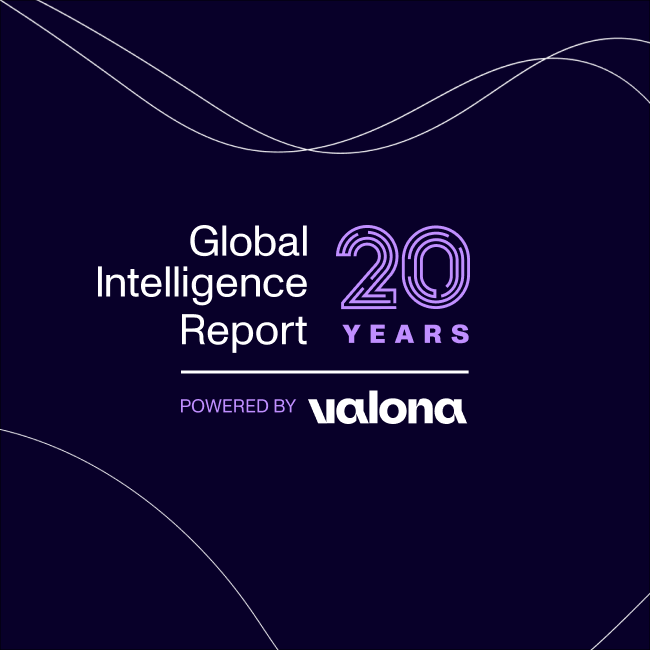
The Complete Guide to Market Intelligence Data Collection: 5 Essential Methods for Enterprise Success
How Fortune 500 companies build comprehensive intelligence systems that deliver competitive advantage
How Fortune 500 companies build comprehensive intelligence systems that deliver competitive advantage
In March 2020, while most companies were scrambling to understand COVID’s supply chain impact, a select few had been tracking concerning signals since December 2019. They had spotted Chinese factory closure announcements in Guangdong trade publications, shipping manifest data showing container volume drops, and regional health department reports about manufacturing disruptions—all in languages most Western companies weren’t monitoring.
The intelligence was there. The signals were screaming. But most organizations were looking in the wrong places, using the wrong methods, or—critically—using the right methods in isolation instead of as an integrated system.
The companies that spotted the crisis early weren’t using secret technology or insider connections. They were using the same five market intelligence methods available to every organization. The difference? They were using them together, creating what we call “intelligence convergence”—where multiple data sources point toward the same strategic insights, providing the confidence needed for major business decisions.
After working with hundreds of global organizations for over two decades, we’ve identified these five foundational methods that separate world-class intelligence operations from everyone else. More importantly, we’ve learned that the magic happens not in any single method, but in how they work together to reveal patterns that isolated analysis would miss.
The COVID supply chain intelligence timeline: How the top five market intelligence methods revealed the pattern
Let’s reverse-engineer how the early-detection companies spotted the crisis using each of the five essential methods:
December 2019 – OSINT Signals: Chinese government databases and trade publications began reporting factory shutdowns in Guangdong province. Companies monitoring regulatory filings and local business journals in Mandarin caught these early indicators.
January 2020 – Social Media Intelligence: Manufacturing forums and LinkedIn discussions among supply chain professionals showed increasing concern about production delays. Social sentiment analysis revealed anxiety spikes in logistics communities.
February 2020 – Competitive Analysis: Some companies were quietly shifting suppliers and adjusting inventory strategies. Patent filings and hiring patterns suggested major manufacturers were preparing for disruption.
February 2020 – Behavioral Intelligence: Customer ordering patterns began shifting—bulk orders, advance purchases, and inventory stockpiling behaviors that indicated market participants were preparing for shortages.
March 2020 – Primary Intelligence: By the time surveys and direct customer feedback revealed supply chain concerns, the crisis was already public. Companies relying solely on this method were weeks behind.
The pattern was clear by January 2020 for those using integrated intelligence methods. Everyone else was blindsided in March.
Now, let’s examine how each market intelligence (MI) method works and how to implement them effectively to avoid being caught off-guard by the next market disruption.
The five essential market intelligence methods in action
Method 1: Primary intelligence collection (Surveys & questionnaires)
Primary intelligence collection through structured surveys and questionnaires remains the foundation of enterprise market intelligence when properly integrated with broader signal detection systems. While many organizations treat surveys as standalone activities, the most effective intelligence teams use them as targeted instruments within a comprehensive intelligence framework.
Strategic application:
- Customer intelligence: Deploy surveys to validate signals detected through other methods
- Market validation: Test hypotheses generated from competitive analysis or trend monitoring
- Sentiment tracking: Measure perception changes over time to identify early indicators of market shifts
Enterprise Best Practices:
- Audience segmentation: Target surveys to specific stakeholder groups based on intelligence gaps identified through other methods
- Question design: Craft questions that can be benchmarked against publicly available data for validation
- Integration points: Design survey findings to complement competitive intelligence and behavioral analysis
The key is treating surveys not as information gathering exercises, but as hypothesis-testing instruments that strengthen your broader intelligence picture.
Method 2: Competitive signal detection (Competitor analysis)
Competitive intelligence has evolved far beyond tracking press releases and product launches. Modern competitive signal detection involves monitoring patterns across multiple data sources to identify strategic intentions before they become obvious market moves.
Strategic application:
- Pattern recognition: Track hiring patterns, patent filings, and partnership announcements to predict strategic direction
- Positioning analysis: Monitor messaging changes, market entry strategies, and customer engagement approaches
- Capability assessment: Evaluate competitive strengths and vulnerabilities across different market segments
Enterprise best practices:
- Multi-source monitoring: Combine public filings, social media intelligence, and industry reporting for comprehensive competitive pictures
- Signal prioritization: Focus on indicators that predict strategic moves rather than just documenting past actions
- Geographic scope: Monitor competitive activity across global markets, not just domestic operations
Effective competitive intelligence reveals not just what competitors are doing, but what they’re preparing to do next.
“The first COVID supply chain signals appeared in Chinese government databases.”
Uses of Market Intelligence data
Market intelligence data plays an important role in shaping business strategies and operations. The following outlines several key ways businesses can use market intelligence data to their advantage.
One of the most valuable applications of market intelligence is identifying emerging market trends. Staying ahead of shifts in consumer behavior or industry developments, businesses can capitalize on new opportunities before their competitors do. This proactive approach allows you to adjust your offerings or enter new markets at the right time.
Aligning product development with customer needs is another significant use of market intelligence. Understanding what your target audience values and expects enables you to design products or services that meet their preferences. This alignment improves not only customer satisfaction but also your product’s market fit, reducing wasted resources on features or innovations that don’t resonate with users.
Additionally, market intelligence empowers competitive analysis, which helps you grasp your market positioning relative to competitors. Examining competitor strategies, pricing, and customer feedback provides insights into the strengths and weaknesses of your own approach. This is critical for staying competitive and making sure that your business doesn’t fall behind.
Targeted marketing efforts benefit greatly from refined customer segmentation, which market intelligence data can provide. Accurate audience segmentation helps in tailoring messaging, campaigns, and promotions to the specific needs of different customer groups. This precision increases the effectiveness of your marketing initiatives, ensuring better engagement and conversion rates.
Market intelligence also plays an essential role in risk management. The analysis of economic indicators, customer sentiment, and industry trends, you can predict potential market shifts or disruptions. This foresight allows for developing contingency plans and mitigating risks before they impact your business operations.
Lastly, pricing strategies are guided by market intelligence data. With a firm understanding of market demand, competitor pricing, and customer willingness to pay, you can set prices that maximize profitability without alienating your audience.
“Market intelligence allows businesses to stay competitive by aligning strategies with real-time data on trends, competitors, and customer needs.”
Want to turn your market intelligence into a game-changing strategy? Try Valona’s competitor analysis tool! Our solution delivers real-time insights into competitor moves, pricing, and trends. Pinpoint your strengths, spot opportunities, and stay one step ahead. Give it a spin and see how easy it is to stay on top of your game!
How to collect Market Intelligence data: Top 5 methods
#1: Surveys and questionnaires
Surveys and questionnaires are one of the most direct ways to gather insights from your customers, offering a window into their preferences, behaviors, and satisfaction levels. If you ask the right questions, you can collect valuable data that helps inform decisions around product development, marketing strategies, and customer service improvements.
One of the key advantages of surveys is their flexibility. You can choose different formats based on your goals and the accessibility of your audience. Whether you send surveys via email, post them online, or conduct them over the phone, each method allows you to reach your customers in the environment where they’re most comfortable. This flexibility also enables you to gather a broad range of data, from quantitative metrics such as satisfaction scores, to qualitative insights like open-ended feedback.
To make sure that you’re gathering meaningful data, it’s important to follow a structured approach when creating and distributing surveys. Here are the steps to consider:
- Identify your target audience: Before crafting your questions, you need to know exactly who you want to reach. Whether you’re focusing on existing customers, potential leads, or a specific demographic, understanding your audience helps tailor your survey to their needs and experiences.
- Craft clear and concise questions: The effectiveness of a survey relies heavily on how well the questions are written. Use simple language and avoid leading questions that might bias responses. Keeping the questions direct and focused will improve the quality of the data you receive.
- Choose the right distribution method: Depending on your target audience, you’ll need to decide the best way to reach them. Email surveys are ideal for existing customers, while social media or website-based surveys can engage broader audiences. For more personal data, phone surveys might be effective, though they can be time-intensive.
- Analyze the responses: Once you’ve collected the data, the next step is to analyze it. Look for patterns in the responses, such as common concerns or recurring suggestions. Quantitative data can be easy to process, but qualitative feedback often requires more in-depth analysis to uncover actionable insights.
Surveys and questionnaires, when structured correctly, provide a powerful way to tap into the thoughts and experiences of your customers.
#2: Competitor analysis
Competitor analysis is a critical method for gathering market intelligence because it offers insights into the strategies of other businesses in your industry. Understanding what your competitors are doing helps you identify gaps in the market, avoid potential pitfalls, and capitalize on opportunities.
Competitor analysis allows you to evaluate both the strengths and weaknesses of other companies. When you analyze their product lines, pricing strategies, and marketing efforts, you can pinpoint where they excel and where they fall short. This knowledge helps you position your business more effectively, making sure that your offerings stand out in the marketplace.
There are a few common methods you can use to gather competitor intelligence:
- Website analysis: Reviewing a competitor’s website can reveal important information such as their target audience, product features, and pricing models. You can also assess how they structure their content and whether they’re running any promotions.
- Product and service offerings: Look into how their products compare to yours in terms of features, quality, and pricing. This can provide actionable insights into what consumers are valuing and where there might be room for improvement in your own offerings.
- Public financial data: If your competitors are publicly traded companies, you can review their financial reports to understand their revenue streams, profitability, and potential investments. This can give you a window into their strategic priorities and overall business health.
Focusing on these areas helps you identify trends and patterns that can guide your own strategy. Competitor analysis also plays an important role in product development. Analyzing what’s working for others can spark ideas for innovations or improvements in your own products, helping you stay competitive in a fast-moving market.
#3: Publicly available data
Publicly available data is a great source for businesses seeking to gather market intelligence without the hefty price tag. You can tap into resources like industry reports, government statistics, and trade journals, and gain considerable insights into market conditions, consumer behavior, and upcoming trends.
Industry reports offer thorough analyses of specific sectors, breaking down market size, competitive landscapes, and growth forecasts. These are usually compiled by research firms and often contain valuable qualitative and quantitative information.
Government statistics, on the other hand, provide a more macroeconomic view. They can help you understand broader economic trends and demographic shifts that might influence your market.
Government agencies frequently release reports on everything from employment and inflation rates to technological adoption rates, all of which can be highly useful when assessing market dynamics.
Trade journals also serve as a great resource, offering timely information on technological advancements, market shifts, and emerging competitors.
One of the primary benefits of using publicly available data is that it’s either free or low-cost, making it accessible for businesses of all sizes. While primary data collection can be expensive and time-consuming, secondary data like government reports or industry white papers provide a cost-effective way to stay informed.
In order to make the most of publicly available data, you should focus on finding credible, up-to-date sources. Some reliable places to begin include:
- Government websites like the U.S. Census Bureau, Eurostat, or the World Bank for economic and demographic data.
- Industry associations that publish reports on specific sectors, such as the National Retail Federation (NRF) or The Association for Computing Machinery (ACM) for tech-related data.
- Research firms that release accessible versions of their reports, such as Statista or IBISWorld, though full access to these might require a subscription.
Strategically using these resources helps you gather valuable market intelligence to inform decision-making and stay competitive.
#4: Customer behavior analysis
Customer behavior analysis is a critical tool in market intelligence that helps you understand how your customers interact with your products and services. Monitoring these interactions offers deeper insights into their needs, preferences, and purchasing habits, which are important for shaping your business strategy.
A key part of conducting customer behavior analysis is utilizing the internal data you already have available. This includes:
- Purchase histories: Analyzing past transactions allows you to identify patterns in what customers buy, when they buy, and how frequently they make purchases.
- Usage patterns: If you offer digital products or services, tracking how users interact with your platform—such as time spent, features used, and frequency of use—can offer valuable insights into customer engagement.
Once you have this data, the next step is to act on it. A well-executed customer behavior analysis can help you refine your product offerings by identifying the features or products that resonate most with your audience.
You can also use it to improve the customer experience—whether that’s through streamlining the purchasing process or tailoring communication strategies to better meet customer preferences.
Additionally, improving the overall experience and aligning products with consumer needs can increase customer loyalty. This leads to repeat business, stronger brand advocacy, and ultimately, greater long-term profitability.
#5: Social media monitoring
Social media monitoring has become an essential tool for gathering real-time market intelligence. These platforms serve as public forums where users openly discuss their experiences with brands, products, or services.
Monitoring these discussions allows businesses to tap into candid customer feedback—whether it’s praise, complaints, or suggestions for improvement—and to better understand their needs, preferences, and pain points.
Real-time tracking is a key feature of social media monitoring. Specialized tools can collect data as conversations unfold, providing up-to-the-minute insights into customer sentiment, brand perception, and even shifts in consumer behavior. This type of immediate feedback is important for staying ahead of trends and responding quickly to potential crises or opportunities.
Follow these practical steps to get started with social media monitoring:
Identify key platforms: Focus on the social media sites where your target audience is most active. For B2B companies, LinkedIn might be more relevant, while consumer-facing brands might find more value in X or Facebook.
Track relevant keywords: Monitor keywords related to your brand, products, competitors, and industry trends. This can include hashtags, phrases, or common misspellings.
Analyze sentiment: Use sentiment analysis tools to gauge whether conversations around your brand are positive, negative, or neutral. This can help you understand customer satisfaction and identify areas for improvement.
Integrating social media monitoring into your market intelligence strategy allows you to continuously gather actionable data that reflects the current pulse of the market.
Supercharge your strategy with Valona’s intelligence solution
Effective market intelligence is both a source of strategic insight and a driver of informed decision-making. Utilizing multiple methods—such as competitor analysis, surveys, and social media monitoring—Makes sure that businesses can stay adaptable in dynamic markets.
The quality of your data and the thoroughness of your collection methods directly impact your competitive edge. Prioritize actionable intelligence to maintain relevance and capture emerging opportunities.
Want to turbocharge your market intelligence game? With Valona’s Intelligence Platform, you’ll get real-time competitor insights, pricing trends, and market shifts right at your fingertips. It’s like having a crystal ball for your business strategy—but way more reliable. Ready to turn smart data into bold moves? Schedule a demo today and start making data-driven decisions with confidence!
FAQ
What are the main methods for gathering market intelligence?
The main methods include surveys and questionnaires, competitor analysis, publicly available data, customer behavior analysis, and social media monitoring. These approaches help businesses collect insights on customer preferences, market trends, and competitor strategies, allowing for more informed decision-making.
How can surveys be used to gather market intelligence?
Surveys help gather direct feedback from customers on their preferences, satisfaction, and needs. By asking specific questions, businesses can identify trends and areas for improvement, tailoring their products or services accordingly.
Why is competitor analysis important in market intelligence?
Competitor analysis helps businesses understand their market positioning, strengths, and weaknesses by examining competitors’ strategies, pricing, and product offerings. This enables companies to adjust their own tactics and gain a competitive edge.
What types of data are commonly used in market intelligence?
Common types include customer data (behaviors, preferences), competitor data (strategies, pricing), product performance data, and broader market trends (industry developments, economic shifts). These provide a comprehensive view of market dynamics and opportunities.
How does social media monitoring contribute to market intelligence?
Social media monitoring allows businesses to track real-time conversations and feedback, giving insight into customer sentiment, emerging trends, and brand perception. It helps businesses stay updated on public opinion and industry discussions.




